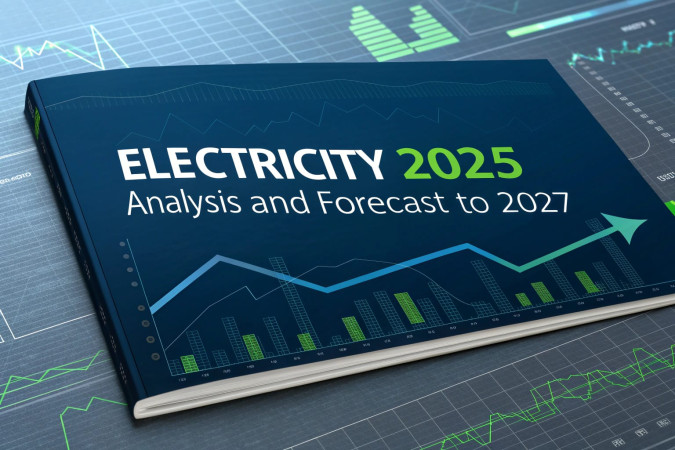
Follow India Renewable Energy News on WhatsApp for exclusive updates on clean energy news and insights
India's Position in Electricity Sector as per IEA Electricity 2025 Report
Feb 18, 2025
India’s electricity sector is undergoing a dynamic transformation, primarily driven by rapid economic growth, the increasing demand for electricity, and ambitious renewable energy targets.
As per the IEA Electricity 2025 report, India’s electricity demand grew by 5.8% in 2024 and is projected to rise further at 6.3% annually between 2025 and 2027. This growth is attributed to factors such as industrial expansion, higher air conditioner penetration, and the electrification of transport.
Peak electricity load has surged significantly, from 148 GW in 2014 to 250 GW in 2024, with projections indicating it may exceed 400 GW by 2030. This sharp rise in demand places considerable pressure on the grid and infrastructure.
Despite the growing electricity demand, coal still dominates India’s energy mix. It accounted for 74% of electricity generation in 2024. However, this share is expected to decline to 67% by 2027 due to an accelerated shift toward renewable energy sources. While the share of coal may fall, absolute coal consumption will likely rise in the short term, driven by the increasing demand for electricity.
Renewable energy sources, especially solar and wind, are set to expand significantly. By 2027, renewable energy generation is expected to increase from 21% of the energy mix in 2024 to 27%. The Indian government is focused on achieving a target of 500 GW of non-fossil fuel capacity by 2030, which will include solar, wind, hydro, and nuclear energy. Among renewable sources, solar energy will experience the fastest growth, with a projected annual growth rate of 28?tween 2025 and 2027.
However, as peak demand increases, so do the challenges associated with managing energy supply and balancing the grid. Cooling demand, primarily driven by air conditioning, is expected to account for 140 GW of peak demand by 2030. With temperature rises, peak demand could increase by over 11 GW per degree Celsius by 2027, which stresses the need for better demand management strategies and efficient energy storage solutions. To address this, the National Electricity Plan aims to introduce 47 GW of Battery Energy Storage Systems (BESS) and 31 GW of pumped storage by 2032. The implementation of Time-of-Day (ToD) tariffs has shown promise in shifting some electricity demand to midday when solar power generation is at its peak, providing further flexibility in the system.
Government policies are playing a crucial role in facilitating the energy transition. The PM-Surya Ghar: Muft Bijli Yojana (2024) aims to install 30 GW of rooftop solar capacity across residential and commercial buildings, further contributing to the clean energy transition.
On the emissions front, India's power sector saw a 5% increase in emissions in 2024 due to higher coal usage. However, the growth in emissions is expected to slow down, with emissions increasing at a rate of just 2% annually between 2025 and 2027. Additionally, the emissions intensity of power generation is projected to decline from 730 g CO?/kWh in 2024 to 660 g CO?/kWh by 2027, supporting India's commitment to reducing carbon intensity.
Lastly, the grid faces significant challenges in terms of flexibility. By 2027, a shortfall of 20-40 GW is expected during the evening hours, particularly if flexible capacity such as BESS or fast-ramping gas plants is not added to the grid. This highlights the pressing need for infrastructure development to support India’s growing electricity demand and renewable energy targets.
The report underscores the pivotal role of renewable energy expansion, energy storage, and government policies in transforming India’s electricity sector into a cleaner, more reliable, and resilient system.